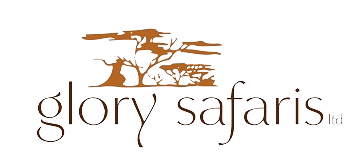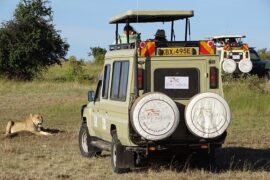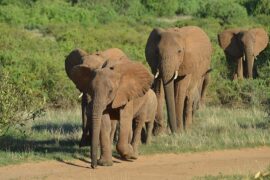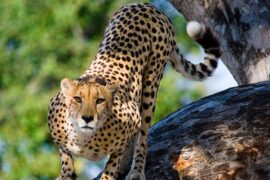Mount Kilimanjaro National Park
Mount Kilimanjaro is the highest peak on the African continent and the tallest free standing mountain in the world.
It rises in breathtaking isolation from the surrounding coastal scrubland with an elevation ranging from around 900metres to an imperious 5,895 metres(19,336ft).
Mount Kilimanjaro was born from catastrophic movements in the earth’s crust that created the Great Rift Valley.
Kilimanjaro is one of the worlds most accessible high summits. Most visitors will reach the crater rim with little more than a walking stick, proper clothing and determination.
And those who reach Uhuru Point, the actual summit, or Gilman’s point on the lip of the crater, will have earned their climbing certificates.
Climate
Equatorial to arctic conditions are experienced on Kilimanjaro.
The range begins with the warm, dry plains with the average temperatures of 30 degrees celsius, ascends through a wide belt of wet tropical forest, through zones with generally decreasing temperatures and rainfall, to the summit where there is permanent ice and below freezing temperatures.
Weather on Kilimanjaro is a direct result of season of the year and the side and altitude of the mountain.
Getting There
128 km (80 miles) from Arusha.
About one hour’s drive from Kilimanjaro airport.
When to Go
Clearest and warmest conditions from December to February, but also dry (and colder) from July-September.
What to Do
:: Six usual trekking routes to the summit and other more-demanding mountaineering routes.
:: Day or overnight hikes on the Shira plateau. Nature trails on the lower reaches.
:: Trout fishing.
:: Visit the beautiful Chala crater lake on the mountain’s southeastern slopes.
The Mountain
Kilimanjaro represents a powerful life force for the local Chagga people and all those who have made their lives around this mountain, providing rich volcanic soils for agriculture and an endless source of pure spring waters.
Mandara Hut
Mandara hut, is a village of A-framed huts in a forest clearing on the Marangu Route.
Each hut features 6-8 sleeping bunks with solar generated lighting, with a camp capacity of up to 60 climbers. Water is piped into the camp from springs above and there are flush toilets behind the main hut.
Mandara Hut is situated on the Marangu Route at an elevation of 2,700m.
Horombo Hut
Horombo hut is a village of huts perched on a small plateau, with buildings similar to Mandara, but with a total capacity of 120 climbers! Horombo is normally bustling with hikers, guides and porters, with an atmosphere of adventure and excitement. You will meet both ascending and descending hikers here.
This extra day and night at Horombo is for additional acclimatisation. A hike towards the Mawenzi hut, passing the Zebra Rocks on the way (about 3 hours up and 1,5 hours down), is strongly recommended. This hike will further assist with the process of acclimatisation.
Remember to drink enough water and move slowly! All meals for the day are provided at the hut. Retire to bed early and get a last good night’s rest.
Kibo Hut
Kibo Hut is a 5 hour hike across the saddle between mawenzi and Kibo and is situated at the bottom of the Kibo crater wall at an elevation of (4,750m).
From here you will attempt the summit to the Uhuru Peak.




